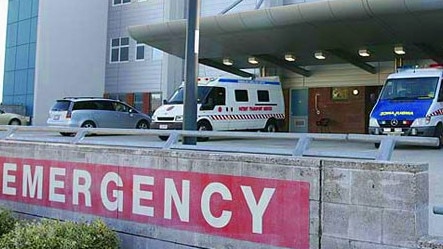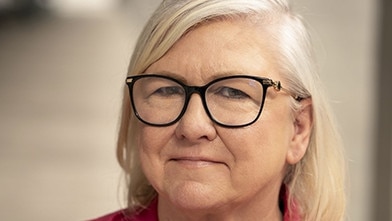SEQ Hospitals to fail maximum waiting times this year | LIST
All of Queensland’s 26 reporting hospitals breached maximum waiting times for emergency departments at least once this year, with one patient forced to sit in a waiting room for more than 13 hours, new data shows. CHECK YOUR HOSPITAL

Logan
Don't miss out on the headlines from Logan. Followed categories will be added to My News.
All of the state’s 26 reporting hospitals failed to meet recommended maximum waiting times at least once in the first four months of the year, according to startling figures.
Data released showed the waiting times for patients who were not seen within clinically recommended times at each of Queensland’s 26 reporting hospitals.
It showed the worst waiting time was at Princess Alexandra Hospital in March, when one patient waited 13 hours and 37 minutes before seeing a doctor – the same amount of time as flying from Brisbane to Los Angeles.
The PA featured at the top of the worst waiting time list in February, March and April.
However, there were no Category 1 patients kept waiting for longer than the government recommended time frames at any of the hospitals over the four months.

Other hospitals also recorded one-off worst waiting times of more than five hours.
Logan Hospital was in the top 10 for having the worst waiting time in each of the four months, along with Redcliffe Hospital.
The longest waiting time for a patient at Logan over the four months was a massive 10hr 53min in March with Redcliffe’s longest waiting time 9hr 41 in February.
Logan has been hit by a GP shortage over the past two years. A $33 million specialist care centre is being built to cut pressure on the hospital’s emergency department.
For patients at Logan Hospital's emergency department, the median waiting time remains 17 minutes, a minute slower than the statewide median.
The busy Ipswich Hospital also made the top 10 worst waiting times for three of the four months.
One patient waited 9hr 4min in February; another 7hr 34min in March and in April a patient was forced to wait 9hr 35 minutes before seeing a doctor.
Ipswich Hospital’s media waiting time was recorded as 24 minutes, six minutes longer than the state median time.
Caboolture Hospital had the third longest waiting time in January of 8hr 55min behind only Bundaberg and Princess Alexandra Hospital.
It’s median waiting time was 20 minutes.

Redland Hospital, which recorded the state’s highest ramping rates last year, made the top 10 for the worst waiting time in February, when a patient had to wait 8 hr 19min to see a doctor.
The hospital has just had a massive seven-storey car park built which some have claimed is at the expense of expansion works to increase the number of hospital beds.
Its median waiting time for category 2 to 5 patients is recorded as 13 minutes, three minutes under the statewide median time.

Health Minister Shannon Fentiman said the data, on its own, was not indicative of a hospital’s overall average waiting time and only highlighted the worst cases.
Ms Fentiman said the waiting time figures reflected the system treating everyone who presented at a hospital but with the sickest and most critically ill treated first.
“Data quality is an ongoing and continuous process, and I am committed to ensuring that Queensland Health is working with, and publishing, transparent, accessible, and
meaningful data,” she said.
“The data provided in this response is drawn from point-in-time input by individual clinicians while they are treating patients, and in many cases represent outliers.”
At the other end of the scale, hospitals at Nambour, Mt Isa and Mackay all consistently met the four-hour waiting rule recommended by the Australian College for Emergency Medicine.
Patients in emergency departments at those hospitals were seen, treated, and either discharged or admitted within four hours in January, February and March.

Nambour Hospital also met the Australasian Triage Scale two-hour maximum recommended waiting time for medical assessment and treatment in an emergency department in February.
Queensland Health said the quarterly data proved that all Category 1 patients, or those who were the most serious, were seen in the clinically recommended time frames.
“Our public hospitals are committed to providing Queenslanders with the medical care they require, including prioritising the sickest patients first,” Queensland Health said.
“Our emergency departments are under a lot of pressure – presentations have increased around 23.5 per cent over the past four years.
“We are seeing more patients with multiple comorbidities, extensive illness and complex needs, but limited social supports.
“Despite growing pressures, Queensland’s health system continues to perform strongly and performance data for the March 2023 quarter showed public hospital emergency departments saw 100 per cent of category 1 patients within the clinically recommended time frame.
“That was despite a 14 per cent rise in presentations for life-threatening conditions compared to the same time last year.”
Queensland Health said over the four-month period, the state had also spent capital on delivering seven satellite hospitals in the southeast.
Metro North Health chief executive Jackie Hanson said lack of available staff was partly to blame for some of the waiting time blowout.

However, she said a 4.6 per cent increase in emergency department presentations at Caboolture Hospital between January and April, compared to the same time last year, equating to a 3.2 per cent increase in presentations was a major factor.
“We know this is a growing community with increasing needs,” Ms Hanson said.
“Caboolture Hospital has the same recruitment challenges that other hospitals and health services are facing at present, due to the shortage of health care workers across Australia and internationally. All efforts are being made to mitigate this.
“As a commitment to reducing these wait times, we are excited to soon open our Caboolture Satellite Hospital, which will offer a minor injury and illness centre as an alternative to the emergency department.”
Ms Hanson said a major redevelopment of the Caboolture Hospital would help alleviate some of the waiting time bottleneck along with a “Virtual Emergency Department” designed to care for patients who may have an emergency concern which can be treated remotely.
Metro South Health said it was working to cut waiting times by increasing staffing and pushing for more hospital discharges where clinically appropriate.

West Moreton Health system, which covers Ipswich Hospital, said its emergency department waiting times had blown out because it dealt with priority patients who had life-threatening illnesses ahead of those with less serious illnesses.
A total of 26,619 people presented to the Ipswich Hospital Emergency Department in the four months to the end of April 2023, equating to a 10.4 per cent increase, or 2502 more patients, compared to the same period the year before.
“The rise in emergency presentations in recent years is outstripping population growth, suggesting other factors are having an effect including the loss of bulk-billable GP services in some regions and the general decline in private health insurance membership,” West Moreton Health said.
“We are also seeing more patients needing urgent care for complications arising from chronic conditions, such as diabetes, heart disease and cancer.
“The greater the complexity of a patient’s condition, the more time our emergency clinicians need to spend treating that patient.”
More Coverage
Originally published as SEQ Hospitals to fail maximum waiting times this year | LIST





